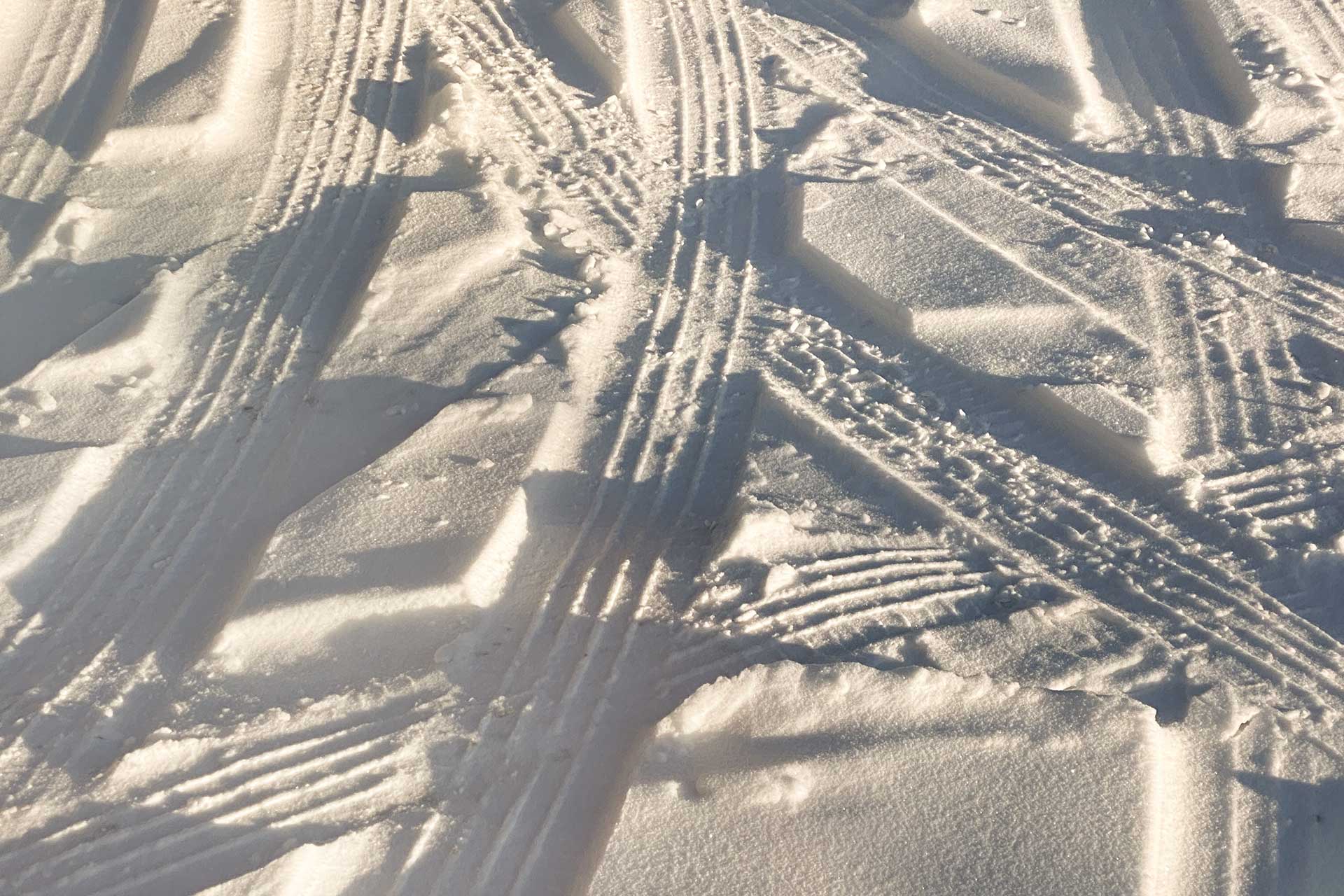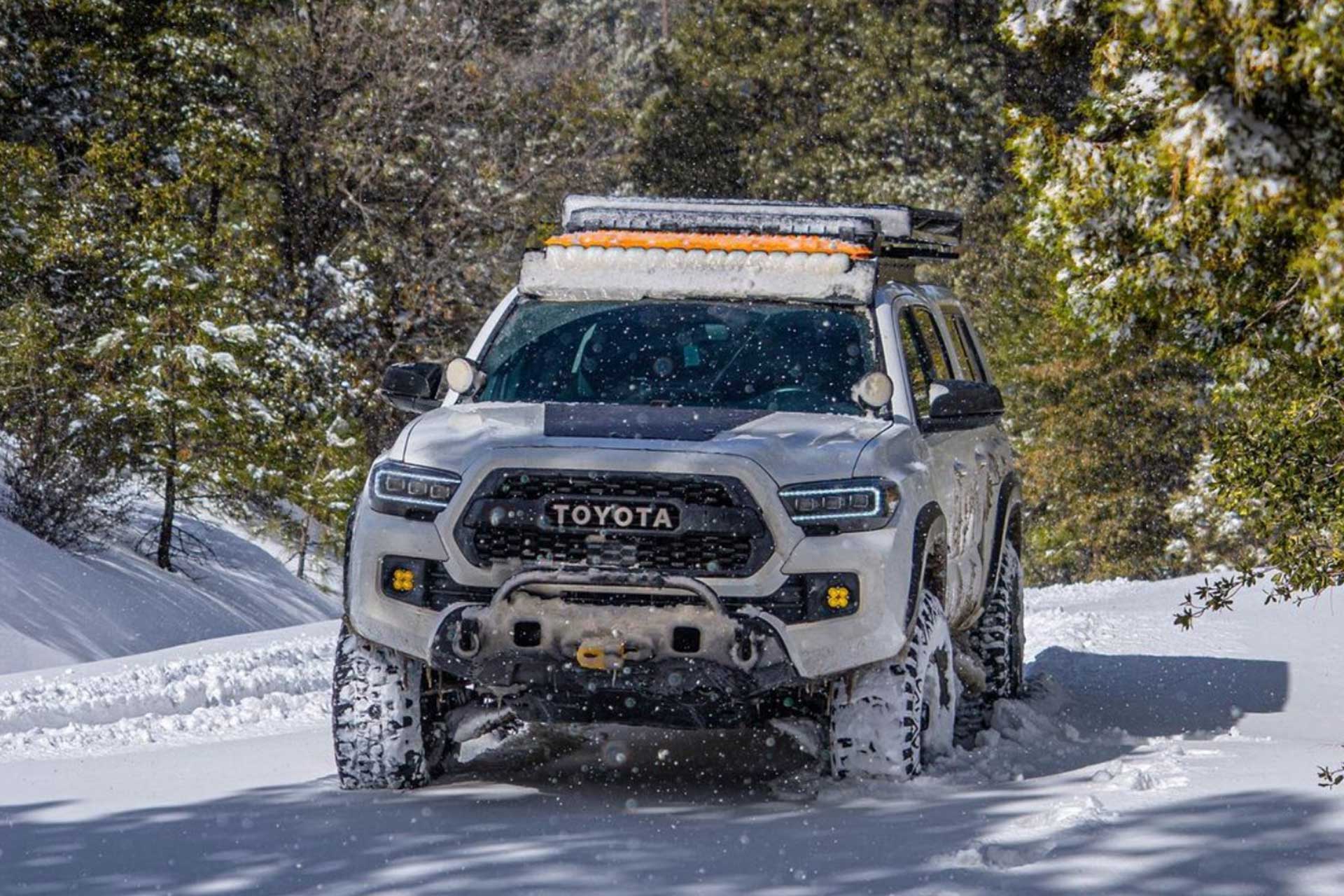For most, the winter months are a time to relax and enjoy the holidays. However, there are those who embrace the cold weather and journey out to explore the beauty of mother nature’s snowy wonderland. Snow wheeling, as it’s known, is a great opportunity to get out and test the limits and capabilities of your truck. Off-roading on snowy terrains is vastly different from the usual dirt, rocks, and mud you may be accustomed to. Snow wheeling provides a truly unique experience.
Before firing up the off-road rig and heading to the nearest trail, let’s go over the condition of the snow you’ll encounter. Not all snow is created equal, and knowing what you’re driving on can ensure yours and others’ safety.
Powder snow is a fine crystalline snow that is usually found at higher altitudes and drier climates. This type of snow is ideal for off-roading. Due to its unique characteristics, powder snow doesn’t pack and clog the tire’s tread blocks as often as other types of snow.
Cruddy snow is the next phase up from powder. As the powder gets driven on by more trucks, the snow can get piled and packed down. That said, it doesn’t mean driving on cruddy snow isn’t fun. By practicing good situational awareness, driving on this type of snow is possible.
As its name implies, crusty snow has a harder top layer than powder snow. Crust is formed when the sun and wind melt the top layer of powder, then the cold temperatures freeze it into a solid again. Driving on crusty snow can be more difficult and cause slipping, so it’s a good idea to bring a friend along just in case you get stuck.
Slush is snow that is partially melted. This type of snow can easily clog the tires and tread blocks which dramatically reduces traction. Slush can also build up on the undercarriage of the truck and lead to getting stuck. Like crusty snow, bring a friend in case of slipping and getting stuck.
Ice should be avoided at all costs. If your area has had sleet, freezing rain, or ice storms, you’ll likely encounter ice on the trails. It is strongly recommended to not drive on icy trails as the terrain condition is not safe.

After familiarizing yourself with the different types of snow, the next step is to prepare your truck and gear for the trails. Here’s a list of some useful tools to have with you in case of an emergency:
Tires are one of, if not the, most important aspects of your truck when it comes to driving on snow trails. Tires are the only thing that connects your truck to the ground, and without the right set of tires, you’ll have a bad time trying to drive in snowy conditions. It is strongly suggested to never attempt to drive in snow, or any other off-road situation, with street tires. Street tires do not respond well to being aired down, have thinner sidewalls, and a tread pattern that does not provide adequate off-road traction.
The best tires for snow wheeling are ones that offer an aggressive tread pattern and chunky tread blocks, such as an all-terrain tire or mud-terrain tire. These types of tires respond very well to being aired down and offer superior traction versus street tires.
Another tire characteristic you may want to consider is firmness of the rubber compound. Because of the sometimes extreme drops in temperature, the tire’s rubber compound can harden. A softer rubber compound provides much better traction than tires with harder rubber compounds.

After gearing up, inspecting your rig, and ensuring you have proper off-road tires, you’re ready to hit the trails. Here are some tips to follow on the trails:
Airing down tires isn’t exclusive to snow wheeling and is useful in off-road driving in general. Airing down gives the tires much more surface area which improves traction, especially on snowy terrain. The more contact the tires have on the driven terrain, the more potential for creating motion and avoiding getting stuck. How much to air down really comes down to the wheels and tires on the vehicle. For example, a beadlock wheel and a proper tire can safely air down to 8 PSI, sometimes even less. That said, most wheel and tire setups can safely air down to 12 PSI and offer excellent traction on any terrain.
When driving on snowy off-road trails, slow speed is your best friend. High speeds come with consequences and can put you in a situation you don’t want to be in. Setting your 4×4 to low allows you to maintain a steady pace, prevents the truck from digging down and getting stuck, and offers more power to push through when driving on less-than-ideal snow.
It’s a good idea to use your best judgment. Analyze the situation and set your 4×4 settings accordingly. Going easy on the accelerator pedal allows for more control in extreme situations. Applying too much acceleration can cause spinning and slipping. As mentioned above, if you do find yourself in a tricky situation, use traction aids like a traction board.
As always, stick to trails and don’t venture off and follow good off-roading etiquette on the trails.
Snow wheeling is a fun, exciting, and rewarding 4×4 experience. Always remember to practice good safety standards, just like any other off-road activity. Bring a friend, be prepared, and practice good situational awareness when on the trails. Have fun!
To learn more; check out the how to choose the right off-road tires, how to read off-road tires, how to extend the life of your off-road tires, and off-road driving safety articles.